Game Review
by Dustin Bailey,Yakuza Kiwami
PlayStation 4
| Description: | 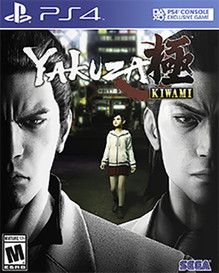 |
||
Yakuza Kiwami retells the story of the original game with the improved visuals and combat and that helped make 0 great. It's still a desperate race for ten billion missing yen, but one that's populated with mountains more side content and a whole lot of Majima. |
|||
| Review: | |||
Kazuma Kiryu. Some call him the “dragon of Dojima,” one of the most legendary fighters the Japanese underworld has ever known. But there's much more to Kiryu than that. He's Kamurocho's toughest boy scott, a righter of wrongs and puncher of faces, the kind of guy who'll help a little old lady across the street and beat the snot out of some tough-talking punks. He's an obsessive slot car racer, and spends evenings in the arcade battling children in a game of rock-paper-scissors dressed up with bikini-clad bug ladies. Yakuza Kiwami serves as both a semi-remake of the original PS2 game and a semi-sequel to Yakuza 0, retelling the existing plot while building connections between the events of 0 and the rest of the series. While Kiwami is less than the sum of its parts, the strength of the games it builds from help it to remain compelling—even if it ends up feeling like a side note for the series.
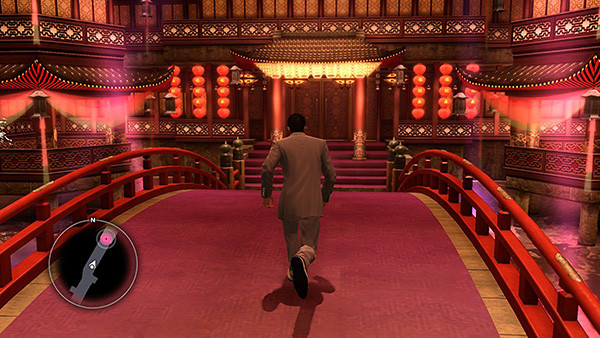 The story closely follow that of the source material. Kiryu takes the fall for the killing of a criminal captain, and after ten years in prison he finds all the factions of his clan vying against each other to recover a mysteriously vanished sum of ten billion yen. With his friends and allies all missing or changed by the events of the intervening decade, Kiryu's only lead is a seemingly orphaned nine-year-old girl named Haruka. Yakuza told a pretty compelling story in 2005, but the evolution of game plots in the meantime means that the particulars don't hold up nearly as well. Characters drop in and out of the story with the most contrived bits of convenience, scenes transition from one to the next with little sense of continuity, and big sections are bogged down by inconsistent pacing that pads out what should be dramatic events with often lengthy fetch quests. Kiwami sticks very close to the original story—though it does add some well-executed context for a certain character's transition from hero to villain—but despite the increased fidelity and expanded cutscenes it doesn't fix many of those old issues. While those problems were negligible in a game released over a decade ago, now the plot can't help but feel disjointed and a little bit unsatisfying, especially in contrast to the epic yarns the series has spun in its best entries.
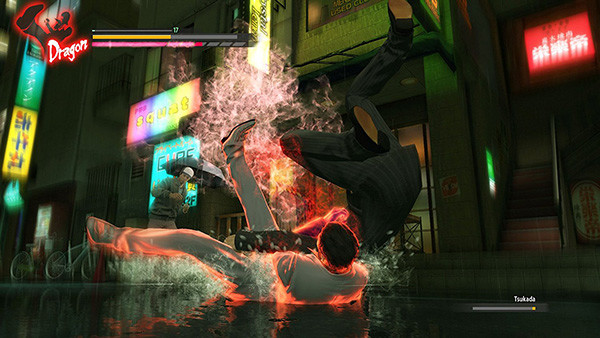 Combat serves as an unequivocal improvement over the PS2 game. Kiwami plays exactly like Kiryu's half of 0, right down to the three distinct fighting styles with most of the same moves and utilities. The clunky battles of early Yakuza were a sticking point even at the time, and the refinement that's come alongside a decade's worth of successive entries finally culminated in a fight system that's “fun” rather than “tolerable.” You've got styles that let you clothesline through groups of bad guys, or quickly dodge and weave around incoming attacks and prepare for fast follow-ups. Switching between them comes naturally, and simple strategies like powering through weak brawlers before switching to a defensive stance to take on more dangerous opponents keeps things interesting. The exaggerated moveset is the stuff of pro wrestling, with dropkicks, suplexes, and lariats serving as some of the most devastating attacks, and unleashing special moves with some built-up meter offers some of most brutally satisfying comic violence a video game can offer.
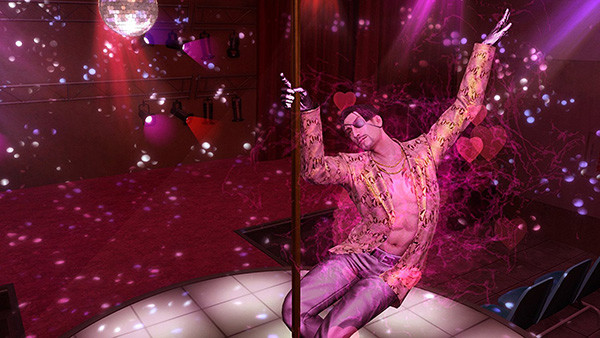 Most of those battles are still great, but Kiwami's boss fights tend to falter, feeling like they're balanced for the limited moveset of the original game rather than the new options that have been introduced since then. It's not that they're that difficult, it's that they're not that exciting. 0 had bosses with far more unique movesets that really forced you to take advantage of every tool in your fistly arsenal. There are exceptions—notably, the climactic battle is still brutal fun—but many of the other big fights leave you feeling like you're equipped with a square peg in a game full of round holes. All these issues are little nagging ones, but together they make Kiwami feel somewhat half-baked. It's more a standalone expansion for 0 than a true sequel—or a true remake of the original—offering just a bit more of everything without reaching any real heights of its own. The biggest bullet-point addition is “Majima Everywhere,” a massive side-quest chain that sees you doing battle with 0's other protagonist over and over again in pursuit of regaining the moves of Kiryu's lost fourth fighting style. At their best, these encounters offer some of the highest heights of absurdity the series has ever seen, with Majima popping out of manholes, dressing up as a zombie, and doing a stint as a stripper in order to get the jump on Kiryu. Those fights are all good fun the first time, but the space between those major moments is filled with random Majima meetings on the street that simply have you repeating the same strategies again and again.
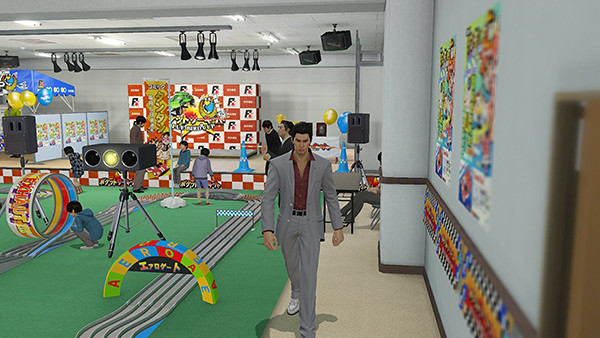 Kiwami also significantly ups the side content over the original game. The original side stories are still there, bolstered by dozens and dozens more that range everywhere from the aforementioned slot car races and bikini bug battles to Kiryu's journey to become recognized as a “bad ass dad.” It's another set of wacky adventures in Kamurocho but, again, there are few moments that reach the heights of 0's cult infiltration or dominatrix training. Kiwami is good, but it's good in ways that stand mostly in the shadow of 0. Everything about the prequel was a little more polished, a little more creative, and a little more interesting—which is likely why Kiwami finds itself released six months later at a budget price. More of 0 is ultimately a good thing, but there are diminishing returns the second time around. |
|
The views and opinions expressed in this article are solely those of the author(s) and do not necessarily represent the views of Anime News Network, its employees, owners, or sponsors.
|
| Grade: | |||
Overall : B-
Graphics : B
Sound/Music : B
Gameplay : B+
Presentation : B-
+ More of a great game, with most of the same satisfying combat and goofball side stories |
|||
| discuss this in the forum (4 posts) | | |||